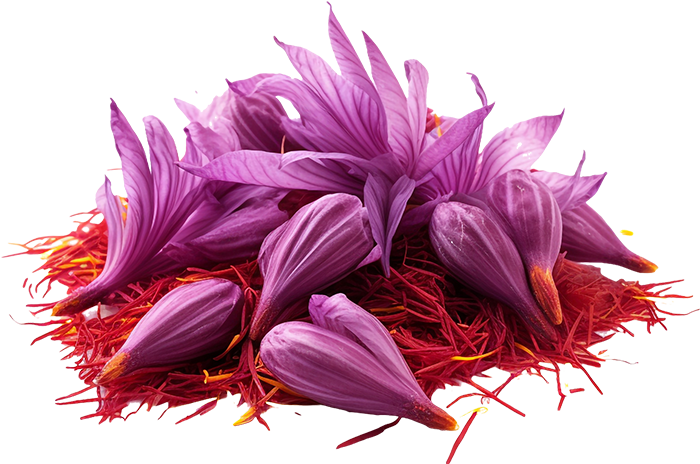Saffron in Canada: A Culinary and Cultural Treasure
Saffron, known as the “golden spice,” holds a special place in the hearts of chefs, food enthusiasts, and cultural aficionados around the world. In Canada, despite its distant origins, saffron has found a thriving niche in culinary practices and cultural traditions. This blog explores the origins, uses, health benefits, cultivation, and availability of saffron in Canada, shedding light on why this precious spice continues to captivate and inspire.
Origins and History
Saffron’s history dates back thousands of years, originating from the Crocus sativus flower. Historically, saffron was cultivated in regions around the Mediterranean, including ancient Persia (modern-day Iran), where it was highly prized for its medicinal and culinary properties. Over time, saffron cultivation spread to other parts of the world, including Europe and Asia, influenced by trade routes and cultural exchanges.
In Canada, saffron cultivation is a relatively recent development compared to its long history in other regions. The climate in parts of Canada, particularly in Quebec and Ontario, has proven conducive to growing saffron, albeit on a smaller scale compared to major producers like Iran and Spain. Canadian saffron farmers have embraced the challenge, producing high-quality saffron that reflects the country’s commitment to sustainable agriculture and culinary innovation.
Culinary Uses
In Canadian kitchens, saffron is celebrated for its distinctive flavor, aroma, and vibrant color. It is used in a variety of dishes, both savory and sweet, to add depth and complexity. Classic dishes like paella, risotto Milanese, and bouillabaisse rely on saffron for their signature flavors and golden hues. Canadian chefs and home cooks alike appreciate saffron’s ability to elevate everyday meals and festive dishes alike, making it a staple in gourmet cooking.
Health Benefits
Beyond its culinary allure, saffron is valued for its potential health benefits. Rich in antioxidants such as crocin, safranal, and kaempferol, saffron is believed to possess anti-inflammatory and mood-enhancing properties. Studies suggest that saffron may help alleviate symptoms of depression, improve mood, and even aid in weight management. In Canada, saffron’s health benefits are increasingly recognized, leading to its inclusion in wellness practices and dietary supplements.
Cultural Significance
In Canada, as in other parts of the world, saffron holds cultural significance beyond its culinary uses. It is used in religious ceremonies, cultural festivals, and traditional practices, reflecting its historical role as a symbol of prosperity, vitality, and purity. Canadian communities with diverse cultural backgrounds, including those of Middle Eastern, South Asian, and Mediterranean descent, incorporate saffron into their culinary traditions and celebrations, adding a touch of authenticity and reverence to their rituals.
Saffron Cultivation in Canada
Although Canada is not a major global producer of saffron, several regions have embraced saffron cultivation with promising results. Quebec, in particular, has emerged as a notable saffron-producing region, where farmers harness the region’s climate and agricultural expertise to grow high-quality saffron. The short but intense growing season in Canada poses challenges, but innovative techniques such as high-tunnel cultivation and careful harvesting have enabled Canadian saffron farmers to produce saffron of exceptional quality.
Buying Saffron in Canada
Finding authentic saffron in Canada involves navigating various sources, from online retailers to specialty stores and local markets. Here are some tips for purchasing saffron in Canada:
- Online Retailers: Websites like Amazon Canada, Well.ca, and specialty spice stores offer a range of saffron products. Look for reputable sellers with positive reviews and transparent sourcing information.
- Specialty Stores: Gourmet food stores, ethnic grocery stores, and tea/spice shops in major Canadian cities often stock high-quality saffron. These stores may offer saffron sourced from different regions, allowing you to explore diverse flavors and qualities.
- Farmers’ Markets: Some farmers’ markets across Canada feature local saffron producers. This direct-to-consumer approach enables you to interact with growers and learn about their cultivation practices.
- Certifications and Labels: Look for saffron labeled with its country of origin and quality grade. Organic certifications or indications of purity can help ensure you’re purchasing genuine saffron threads.
- Price and Quality: Authentic saffron is expensive due to its labor-intensive harvesting process. Be wary of unusually low prices, as they may indicate inferior quality or adulteration.
Saffron in Canadian Cuisine
Canadian chefs and home cooks have embraced saffron as a versatile ingredient that enhances both traditional and modern dishes. From Quebecois-inspired saffron-infused dishes to multicultural creations influenced by global culinary traditions, saffron’s presence in Canadian cuisine reflects the country’s diverse palate and culinary innovation. Restaurants across Canada feature saffron in their menus, showcasing its ability to elevate flavors and create memorable dining experiences.
Challenges and Sustainability
Despite its growing popularity, saffron cultivation in Canada faces challenges related to climate variability, labor intensity, and market competitiveness. The short growing season limits the production window, requiring careful planning and management. Additionally, ensuring sustainable farming practices and combating issues like adulteration are critical for the long-term viability of saffron production in Canada.
Conclusion
Saffron’s journey in Canada—from its historical roots to its modern-day applications—highlights its enduring appeal and cultural significance. As Canadians continue to explore and appreciate this golden spice, they contribute to its global legacy as a symbol of culinary excellence and cultural heritage. Whether used in a comforting bowl of risotto or as a key ingredient in festive celebrations, saffron enriches the Canadian culinary landscape with its unique flavor profile and vibrant color.
As you explore saffron in Canada, consider its role in both traditional dishes and innovative culinary creations. Embrace the opportunity to savor the richness and complexity that saffron brings to every dish, celebrating its journey from field to plate and its place in Canada’s multicultural tapestry.


